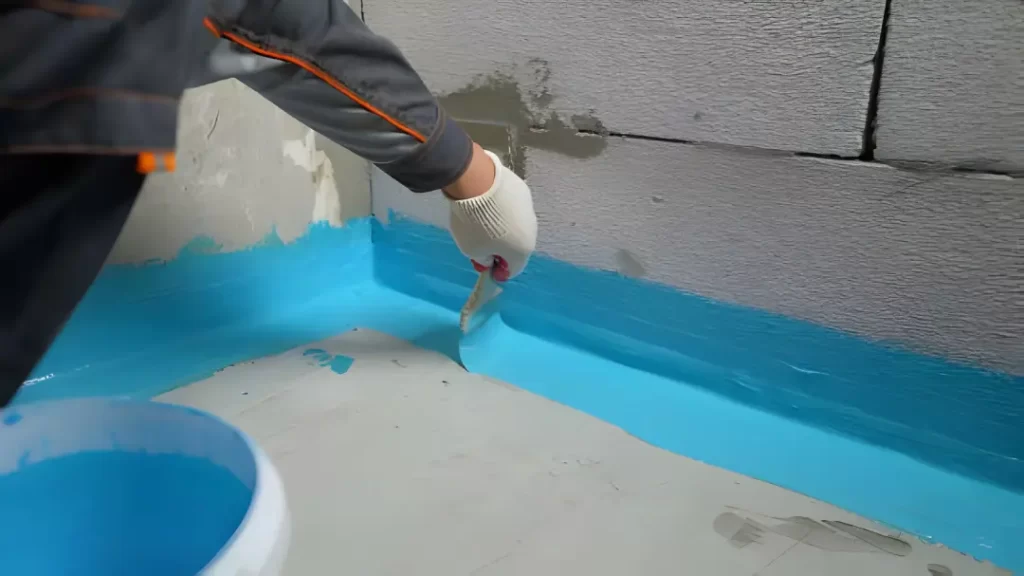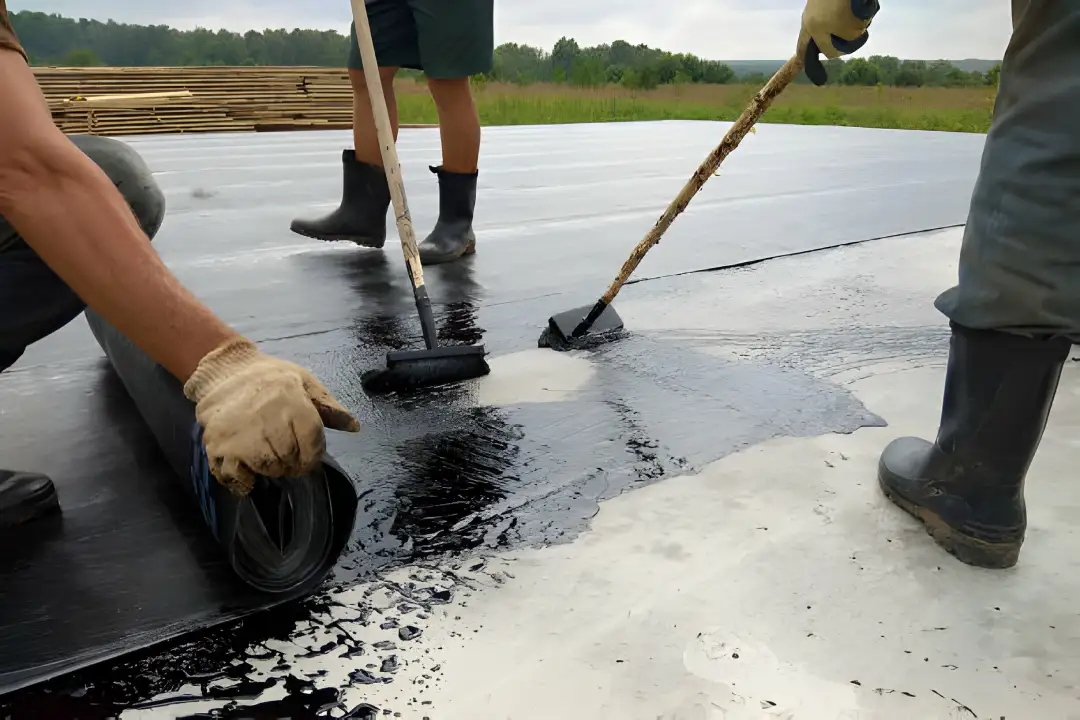Have you ever thought about how important waterproofing is for buildings? It’s not just about looks, it’s a really important part of making sure a building lasts a long time and doesn’t get damaged. First, let’s understand what is waterproofing.
Waterproofing is the process of making something resistant to water damage. This involves putting a special water-repellent coating or layer on the surface to prevent water from getting in and causing problems like mold, rot, erosion, and damage to the structure. Common things that often need waterproofing include basements, roofs, building foundations, decks, boats, and vehicles.
On a building or structure, waterproofing creates a protective cover that shields the inside from too much moisture. It acts as a barrier to stop water from getting in, keeping the inside dry and usable. The materials used for waterproofing buildings and construction projects include asphalt, plastics, polymers, fabrics, clay, and cement additives like silicone and urethanes. Professional waterproofing services use advanced methods to handle water concerns below the ground, at the surface level, and above. Now discuss why waterproofing is so important in construction.
Importance of Waterproofing in Construction
Protecting Against Water’s Hidden Dangers
Water might seem harmless, but it can cause a lot of damage to buildings over time. From leaky roofs to wet walls, water getting inside can cause big problems. Waterproofing acts like a shield, stopping this hidden threat of water from getting in. It’s the proactive step that stops water from seeping into the very foundation of a structure, causing damage that often goes unnoticed until it’s too late.

Keeping the Structure Strong
At the core of any building’s longevity is its structural soundness. Water, over time, can compromise the strength of a structure. Waterproofing ensures that the foundation remains intact, protecting against erosion and weakening of the building’s bones. It’s like giving your home or office a suit of armor, ensuring it stands tall against the test of time.
Preventing Mold and Mildew: A Healthier Environment
Beyond the visible damage, water infiltration often leads to the growth of mold and mildew. These not only affect the aesthetics of a space but also pose health risks. Waterproofing helps prevent these unwanted guests from growing by keeping the space dry. It contributes to a healthier environment for the people living or working inside.
Preserving Aesthetics: Beauty that Lasts
Let’s face it – nobody wants a building that looks weather-worn and weary. Waterproofing plays a significant role in preserving the aesthetics of a structure. It prevents ugly water stains, peeling paint, and structural discoloration. Your building deserves to maintain its aesthetic appeal, and waterproofing ensures that it ages gracefully.
Saving Costs in the Long Run
Some might think waterproofing is an extra cost, but really, it’s a smart investment that saves money down the road. Repairing water damage can be very expensive. Waterproofing is a proactive step that prevents the need for costly repairs and maintenance. It’s a cost-effective strategy that pays off over time, protecting both your building and your wallet.
Keeping Comfortable and Saving Energy
Waterproofing also helps with energy efficiency by sealing gaps and drafts. A well-insulated and waterproofed building keeps heat in during winter and stays cool in summer. This not only keeps the people inside more comfortable, but it also reduces the need for heating and cooling systems, leading to energy savings and a smaller carbon footprint.
Boosting Future Resale Value
If you ever decide to sell your property, waterproofing becomes a selling point. Potential buyers are drawn to buildings that have been well-maintained and don’t have water damage. By investing in waterproofing, you’re not just protecting the present; you’re also making a wise investment for the future resale value of your property.
Building Responsibly for the Environment
These days, being environmentally conscious is important. Waterproofing contributes to building responsibly. By preventing water damage and the need for repairs, it reduces the demand for new construction materials. This, in turn, minimizes the environmental impact associated with manufacturing and transporting those materials.
Choosing the Right Waterproofing Method: Tailoring Solutions to Needs
The importance of waterproofing is clear, but it’s also important to choose the right method for your specific needs. From chemical coatings to membrane systems, each method has its strengths and uses. Talking to waterproofing experts ensures that you find the solution that fits your building’s unique needs, maximizing its protective abilities.
Conclusion: Navigating the Waters of Building Preservation
To wrap up our look at the importance of waterproofing for buildings, one thing is very clear – it’s a key part of responsible construction and maintenance. Beyond just looks and structural strength, waterproofing contributes to healthier living spaces, saves money, and is better for the environment. So, the next time you think about how to make a building last, remember that waterproofing is the key to protecting it from water damage. Your building deserves the best – let it stand strong against the elements with the power of waterproofing.

